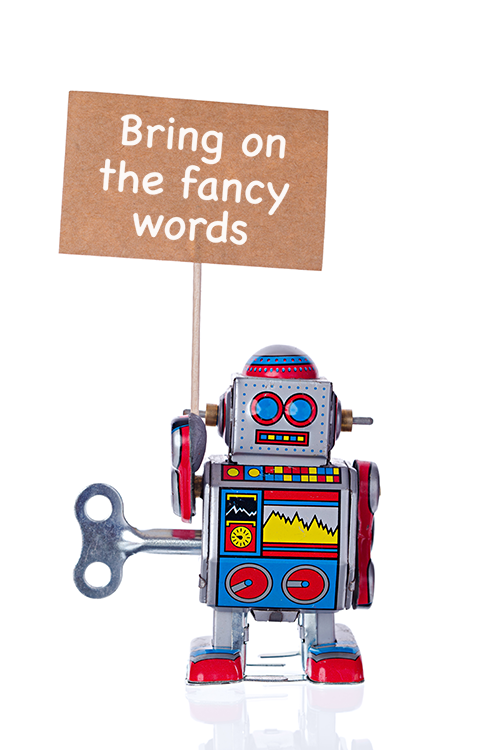Guide to Brand Terminology
The world of Brand Strategy and Branding is full of buzzwords and jargon. It can seem daunting or, at the very least, confusing. If you’re working on your Brand or your Marketing, it’s helpful to have a grasp of the terminology and the role each element plays.
In this post, I’ll explain some of the most common terms I get asked to define. But before we jump in, it’s worth explaining the difference between ‘Brand’ and ‘Marketing’ as the two disciplines are often confused. And understanding the differences between the two and how to use them both effectively can boost your business to the next level.
A Brand is best described as the meaning and associations people make when considering a business, service or product. These associations are intuitive and based on emotion rather than rational thought. So, while a business can’t directly control what people associate with a brand, it can influence them with smart strategy and effective communication.
A Brand Strategy is a plan to guide and systematically develop a brand to meet the business's requirements and goals. It defines the company's purpose for existing, the value it provides to customers, a vision for its future, and how it operates day to day. It provides the foundations for all business functions, including culture, process, and customer experience.
Positioning is an important element of strategy as it defines how a business wants to differentiate itself in the customer’s mind in order to gain a competitive advantage. A good positioning strategy will allow a brand to stand out in a crowded market and attract its target customers.
Having laid the strategic foundations of the brand, Marketing then uses plans and tactics to actively promote the business, service or product. It employs brand assets and key messages to connect with customers and persuade them to buy.
For this reason, Brand naturally precedes Marketing. For example, you must create a brand identity and key messages before communicating them through Marketing. And it’s vital to define a clear Brand Position before planning which marketing channels to employ.
Finally, where Branding is more sturdy and long-term focussed, Marketing is more agile and concentrates on shorter-term activities.
Now, with that cleared up, here’s a list of Brand terms with definitions and examples:
Brand
The associations people make when they think of your offering. These associations are based on intuition and emotion rather than rational thought. You can’t control or tell people what to associate with your brand, but you can influence them with smart strategy and effective communication.
What it’s not: your logo
Your logo is a symbol that represents your brand - it works as a visual shortcut and is one of many elements that make up your brand’s visual identity.
Brand Assets
Recognizable elements that people associate with your brand. Includes logo, colour, graphics, sounds, name, characters, and shapes.
eg. Apple’s half-bitten apple icon or Disney’s Mickey Mouse character
Brand Strategy
A plan to guide and develop a brand to meet your business requirements and goals.
Differentiation
The art of standing out from the competition.
Guidelines
A document that details how to correctly use your brand assets - logo, colours, fonts, photography, illustrations, tone of voice. Useful internally or for agencies and partners. It helps ensure consistent communication of your brand, achieving more clarity and impact for your message.
Mission
Your objective on a day-to-day basis.
Why do I need one?
It provides focus for everyone in the business.
Personality
The set of human characteristics that describe the beliefs and behaviours of your brand.
Playbook
A document that brings together your Brand Strategy, Positioning and Personality. It provides an engaging way to articulate your brand. Great for team communication, recruitment and sharing with customers and suppliers.
Positioning
A strategy to differentiate your brand in your customer’s mind in order to gain a competitive advantage.
Why do I need one?
It allows you to stand out in a crowded market and attract your target customers.
Promise
A stated or implied pledge of responsibility to your customers, team and/or suppliers.
eg. Fed Ex over night guarantee
Purpose
Why your brand exists. Put simply, it’s the reason you get out of bed every morning above and beyond financial gain.
eg. Coke - ‘Refresh the world and make a difference’.
Why do I need one?
It provides direction and inner belief (after all, we all like to feel that we’re making a difference). If you know why you’re doing what you do, it’s much easier to make strategic decisions, align your team and develop engaging communication.
Slogan (or tagline)
A short and memorable phrase that embodies your brand. A strong slogan accurately represents the brand even when seen or heard separately from the name or logo.
eg. Nike - ‘just do it’
Tone of voice
How your brand expresses personality through words - both written and spoken.
Value proposition
The benefits that your brand provides to your customers - both rational and emotional.
Values
The principles and beliefs that guide your actions and decisions. They reflect what you stand for and sit at the heart of how you operate as a business.
eg. Lego - Imagination, Creativity, Fun, Learning, Caring, Quality
Why do I need them?
They help customers relate to your brand which builds trust. They differentiate you from competitors and form the backbone of your culture.
Vision
Where your brand aspires to go, what it aspires to be, and the impact you aim to have.
Why do I need one?
It serves as an inspirational guiding light that sets the direction for the brand, aligns the team and helps make strategic decisions.
Visual identity
The outward expression of your brand. Includes your name, logo, colours, fonts etc.

